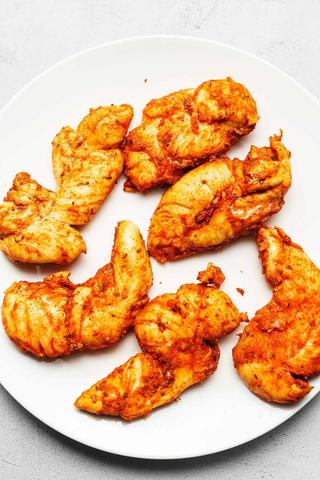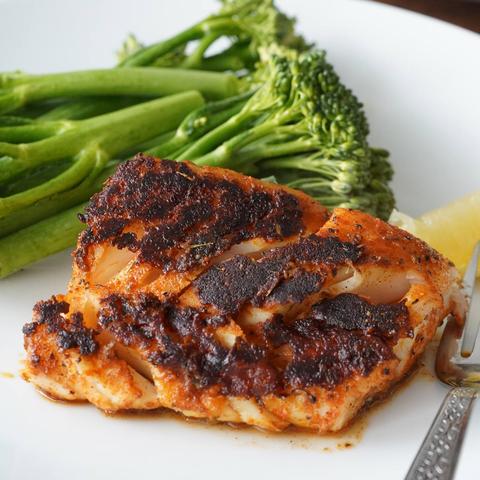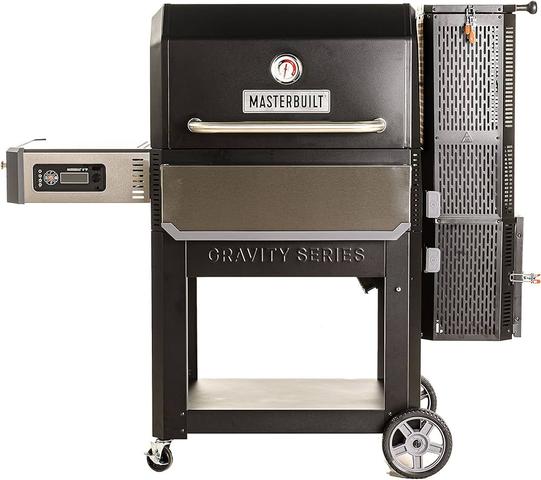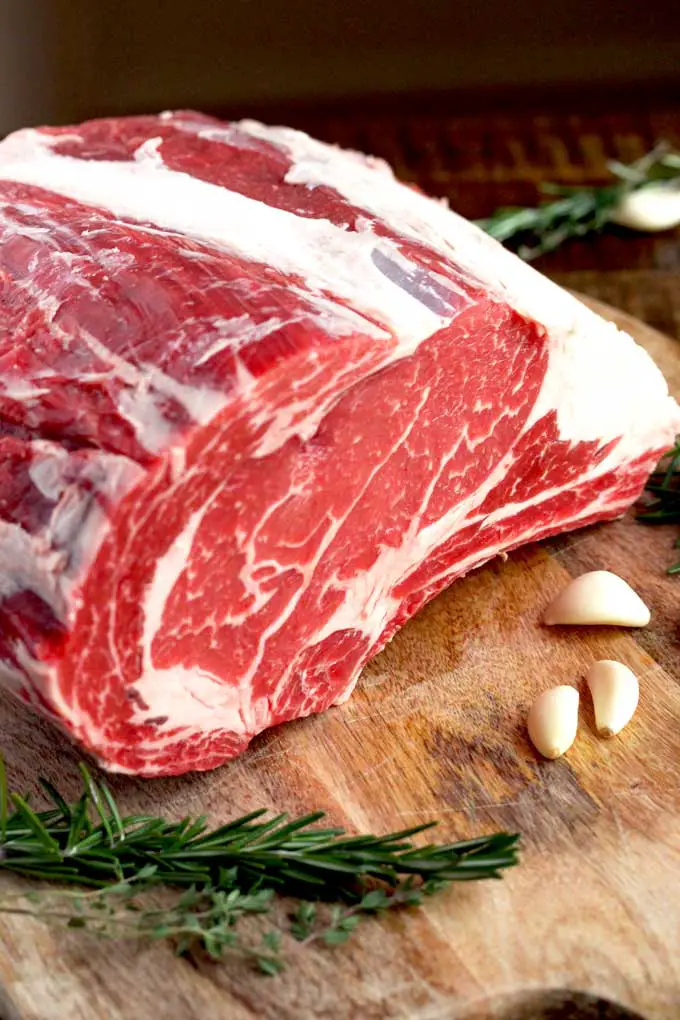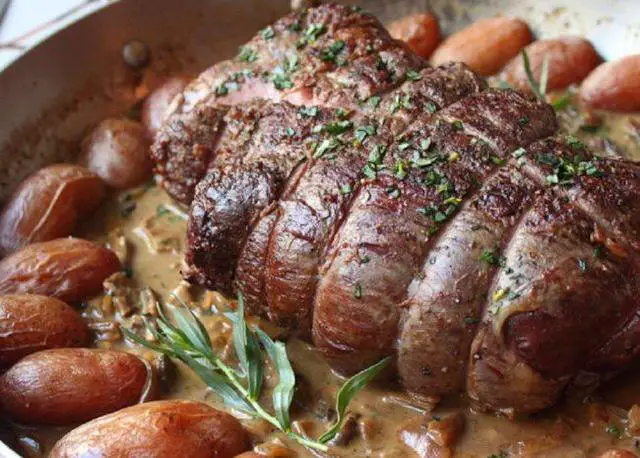
Learn the art of searing a delicious roast with our easy-to-follow guide. Discover essential tips and techniques to achieve that perfect caramelized crust, locking in all the savory flavors. Elevate your cooking skills and impress your guests by mastering this culinary cornerstone.
WHAT DOES IT MEAN TO SEAR MEAT?

Searing meat refers to the process of cooking the outer surface of the meat at a high temperature until a rich brown crust forms. It is an important technique used in cooking to enhance the flavor and appearance of large pieces of meat, such as chuck roast or prime rib. By searing the meat, you are able to create layers of flavor and achieve a caramelized crust that adds depth to your dish.
When you sear meat, you are essentially browning it quickly on all sides. This not only helps to lock in the juices and keep the meat moist, but it also creates a visually appealing golden-brown color on the exterior. Searing is typically done before proceeding with the rest of the recipe, whether it involves slow cooking in an oven or using a slow cooker or InstantPot.
HOW TO SEAR A ROAS
Searing a roast is a crucial step in achieving a perfectly brown caramelized crust on your meat. This not only enhances the flavor but also gives your roast an attractive appearance. To sear a roast, start by removing it from the refrigerator and letting it sit at room temperature for up to thirty minutes. While it sits, you can prepare other ingredients like chopping vegetables.
Next, choose a cooking vessel with some sticking power, such as a stainless steel skillet or roasting pan, cast iron, or enameled cast iron Dutch oven. Avoid using non-stick skillets as they may not give you the desired golden sear. Make sure the cooking vessel is big enough to allow the meat plenty of room without steaming.
TAKE THE CHILL OFF THE MEAT
Before searing your roast, it’s important to let it sit out at room temperature for up to thirty minutes. This allows the meat to take off some of its chill and ensures more even cooking throughout. While the meat is sitting, you can use this time to prep any vegetables or other ingredients needed for your recipe.
To achieve the best results when searing your roast, it’s recommended to use a cooking vessel with a little sticking power. Stainless steel skillets, roasting pans, cast iron, or enameled cast iron Dutch ovens are all great options. Avoid using non-stick skillets as they may not provide the same level of browning. Make sure the vessel is large enough to allow the meat plenty of room without overcrowding.
To develop that beautiful golden crust on your roast, it’s essential to start with a hot pan. Preheat your skillet or cooking vessel on medium-high heat for 8-10 minutes before adding the meat. This will ensure that the pan is properly heated and ready for searing.
Liquid is the enemy of browning and can cause steaming instead of searing. Before placing your roast in the hot pan, use a paper towel or kitchen towel to blot any excess moisture from the meat’s surface. This will help promote better browning and caramelization.
To prevent burning of other spices like garlic, black pepper, and herbs during searing, it’s best to season the roast with salt only. Generously coat all sides of the meat with salt for proper seasoning before placing it in the hot pan.
Choosing the right oil for searing is debatable, but it’s generally recommended to use oils with high smoke points. Avocado oil, beef tallow, or light olive oil (a more refined oil) are all acceptable options. Avoid using extra virgin olive oil as it has a lower smoke point and may not be suitable for high-temperature searing.
While searing your roast, it’s important to resist the urge to constantly check on the meat. Allow each side to cook for about 3 minutes without disturbance to develop that desired brown crust. Constantly flipping or checking on the meat may result in less browning and risk tearing the meat before it’s ready to release from the pan.
Once both sides of your roast are seared, consider also searing the sides for additional flavor and appearance. Use tongs to hold the roast upright on its side for a couple of minutes, then repeat on all sides until evenly browned.
After achieving a beautifully seared crust on your roast, it’s time to move on to finish cooking. You can choose to transfer the meat into a slow cooker, oven, or InstantPot according to your recipe instructions. Regardless of your chosen cooking method, your roast will now have maximum flavor and an attractive appearance thanks to proper searing.
CHOOSE THE RIGHT PAN
When it comes to searing a roast, the choice of pan is crucial. Opt for a cooking vessel with a little sticking power, such as a stainless steel skillet, roasting pan, cast iron, or enameled cast iron Dutch oven. These materials will help achieve the desired golden crust on your meat. Avoid using non-stick skillets as they may not provide the same level of browning. Additionally, make sure the pan is large enough to allow the meat plenty of room and prevent steaming.
To achieve that beautiful caramelized crust on your roast beef, it’s essential to start with a hot pan. Pre-heat your chosen pan on medium-high heat for 8-10 minutes before cooking. This will ensure that the surface temperature of the pan is high enough to create a deep-brown sear on the meat. Cooking on low heat will not result in the desired coloring, so be sure to get your pan nice and hot before adding the roast.
Prior to searing, take a paper towel or kitchen towel and blot any excess moisture from the surface of the roast. Liquid can hinder browning and cause more steaming during cooking. Season generously with salt on all sides of the meat. It’s best to use only salt at this stage to prevent other spices from burning.
Selecting an oil with a high smoke point is important for achieving optimal browning without burning or smoking excessively. Refined oils like avocado oil, beef tallow, or light olive oil are suitable choices due to their higher smoke points. Extra virgin olive oil has a lower smoke point, so it’s best to avoid using it for searing. Use about 1-2 tablespoons of oil and evenly coat the bottom of the pan to help the roast brown evenly.
Resist the temptation to keep checking on the meat while it sears. Allow it to cook undisturbed for approximately 3 minutes on each side before flipping. Constantly moving or flipping the meat can result in tearing and less browning. Trust the process and let the meat develop a rich brown crust before flipping or moving it.
For an even sear all around, don’t forget to sear the sides of the roast as well. Use tongs to hold the roast upright on its side for a couple of minutes, repeating this process for all sides. This will ensure that every part of your roast has that desirable caramelized crust.
Once your roast is beautifully seared, it’s time to continue cooking according to your recipe. You can transfer it to a slow cooker, oven, or InstantPot depending on your preferred method. The initial searing process will have built maximum flavor and created an attractive appearance for your roast beef.
PRE-HEAT YOUR PAN
Before searing your roast, it is crucial to pre-heat your pan. This step ensures that you achieve the desired golden-brown crust on the outer surface of the meat. Use a cooking vessel with a little sticking power, such as a stainless steel skillet, roasting pan, cast iron, or enameled cast iron Dutch oven. Avoid using non-stick skillets as they may not provide the best browning results. Make sure the pan is large enough to accommodate the meat without crowding it.
Prior to searing, take the roast out of the refrigerator and let it sit at room temperature for about 30 minutes. During this time, you can prepare other ingredients or chop vegetables. Blot excess moisture from the meat using a paper towel or kitchen towel. Moisture hinders browning and can cause steaming instead. Generously season all sides of the roast with salt. It is recommended to only use salt during this step to prevent other spices from burning during searing.
Select an oil with a high smoke point, such as avocado oil, beef tallow, or light olive oil (refined). These oils can withstand high temperatures without burning or releasing unwanted flavors. Avoid using extra virgin olive oil due to its lower smoke point. Add 1-2 tablespoons of oil to the pre-heated pan and swirl it around to evenly coat the bottom surface. The small amount of oil helps promote even browning of the roast.
Once your pan is hot and adequately oiled, place the seasoned roast in the pan and let it cook undisturbed for about 3 minutes or until a rich golden-brown crust forms on one side. Avoid the temptation to constantly check on the meat, as this can prevent proper browning and may cause the meat to tear. Flip the roast to sear the other side for another 3 minutes. To achieve an all-around caramelized crust, use tongs to hold the roast upright on its sides and sear each side for a couple of minutes.
BLOT YOUR ROAST TO REMOVE MOISTURE
Before searing your roast, it’s important to remove any excess moisture. This is because liquid can hinder the browning process and lead to more steaming. Take a paper towel or kitchen towel and gently blot the surface of the roast to remove any moisture. By doing this, you’ll create the optimal conditions for achieving a rich brown crust on your meat.
Choosing the right cooking vessel is crucial when searing a roast. Opt for a skillet or roasting pan that has some sticking power, such as stainless steel, cast iron, or enameled cast iron Dutch oven. Non-stick skillets are not recommended as they may not provide the desired golden sear. Additionally, make sure the cooking vessel is large enough to allow ample room for the meat without causing it to steam.
To achieve that deep-brown sear on your roast beef, it’s essential to preheat your pan on medium-high heat for about 8-10 minutes before cooking. This step ensures that your pan reaches a high temperature, which is necessary for developing flavor and browning the meat effectively. Be patient and resist the urge to cook on low heat; higher temperatures are key to achieving that attractive caramelized crust.
SEASON MEAT
Before searing the meat, it is important to season it with salt. Generously coat all sides of the roast with salt to enhance the flavor. Avoid using other spices at this stage as they may burn during the high heat searing process.
To ensure even seasoning, use your hands to rub the salt into the meat, making sure it is evenly distributed. Let the seasoned meat sit at room temperature for about 30 minutes to an hour before proceeding with the searing process.
PLACE OIL IN THE PAN
To achieve a perfectly seared roast, start by adding 1-2 tablespoons of oil to the cooking vessel. Avocado oil, light olive oil, or beef tallow are all great options with high smoke points. Swirl the oil around the bottom of the pan so it is evenly coated. This will help the roast brown evenly and prevent sticking.
To ensure a deep-brown sear on your roast, it’s crucial to preheat your pan. Set your stove to medium-high heat or about a 7 and let the pan heat up for 8-10 minutes before cooking. A hot pan is essential for achieving that golden crust on your meat.
Prior to searing, use a paper towel or kitchen towel to blot any excess moisture from the surface of the roast. Liquid can hinder browning and cause more steaming to occur. Removing excess moisture will allow for better browning and caramelization.
DON’T MOVE THE MEAT
When searing a roast, it is crucial to resist the urge to constantly check or move the meat. Letting it cook undisturbed for a few minutes allows the surface to develop that rich brown crust that adds so much flavor. Moving the meat too soon can cause it to tear or prevent proper browning. Trust the process and let the meat do its thing.
In addition to searing the top and bottom of the roast, take the time to sear all sides as well. This step ensures that every surface of the meat develops that beautiful caramelized crust. Use tongs to hold the roast upright on its side for a couple of minutes, then repeat on all remaining sides. This extra effort will greatly enhance both the taste and appearance of your roast.
SEAR THE SIDES
To achieve a perfectly brown caramelized crust on your roast, it’s important to sear the sides as well. After searing both the first and second sides of the roast, use tongs to hold the roast upright on its side for a couple of minutes. This allows the heat to evenly brown the edges of the meat, adding even more flavor and visual appeal to your roast.
Once you have achieved a beautifully seared crust on all sides of your roast, it’s time to move on to finishing the cooking process. You can choose to place the roast in a slow cooker, oven, or Instant Pot according to your recipe’s instructions. The searing process has already built maximum flavor in your meat, and now you can continue cooking it using your preferred method to achieve a deliciously tender and flavorful result.
PROCEED WITH RECIPE
Now that you have successfully seared your roast and achieved that beautiful brown crust, it’s time to move on to finishing the cooking process. You have a few options for this step, depending on your preference and the recipe you are following. One option is to transfer the roast to a slow cooker, such as in my slow cooker pot roast recipe. This allows the meat to cook slowly and become tender while retaining all of those delicious flavors you just created with the searing process.
Another option is to finish cooking the roast in the oven. This method is great if you want a crispy exterior and a juicy interior. Simply preheat your oven to the desired temperature according to your recipe, place the seared roast in a roasting pan or baking dish, and cook until it reaches your desired level of doneness.
How to sear a roast
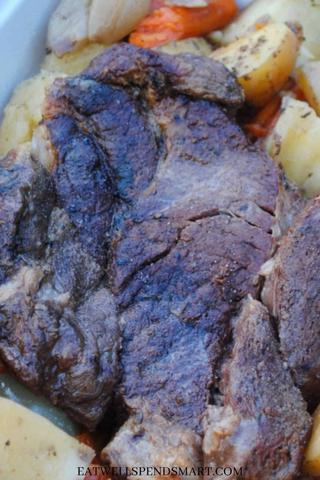
Searing a roast is an essential step in achieving a perfectly brown caramelized crust on your meat. This not only adds flavor but also enhances the appearance of the roast. To sear a roast, start by removing it from the refrigerator and letting it sit at room temperature for up to thirty minutes. This allows the meat to warm up slightly and ensures more even cooking.
Next, choose a cooking vessel with some sticking power, such as a stainless steel skillet, cast iron skillet, or enameled cast iron Dutch oven. These pans are preferred because they can withstand high temperatures required for searing. Preheat your chosen pan on medium-high heat for 8-10 minutes to get it nice and hot.
Equipment
To achieve a perfectly seared roast, you will need the following equipment:
- A cooking vessel with sticking power such as a stainless steel skillet, roasting pan, cast iron skillet, or enameled cast iron Dutch oven.
- A paper towel or kitchen towel for blotting excess moisture.
- Tongs for flipping and searing the sides of the roast.
- An oven, slow cooker, or InstantPot for finishing the cooking process.
Ingredients
– Chuck roast or prime rib
– Salt
– 2 tablespoons oil (avocado oil, light olive oil, or beef tallow)
Instructions
1. Remove the roast from the refrigerator and let it sit out at room temperature for up to thirty minutes. This allows the meat to cook more evenly.
2. Choose a cooking vessel with a little sticking power, such as a stainless steel skillet or roasting pan, cast iron, or enameled cast iron Dutch oven. Make sure it is big enough to allow your meat plenty of room.
3. Preheat your cooking vessel on medium-high heat for 8-10 minutes to get it nice and hot. A hot pan is essential for achieving a deep-brown sear.
4. Blot excess moisture from the roast using a paper towel or kitchen towel. Moisture can hinder browning and cause steaming.
5. Season the roast generously with salt on all sides. Avoid using other spices at this stage to prevent them from burning during searing.
6. Add 1-2 tablespoons of oil, such as avocado oil, light olive oil, or beef tallow, to the hot pan and swirl it around so that it evenly coats the bottom.
7. Place the seasoned roast in the hot pan and let it cook undisturbed for about 3 minutes or until a rich brown crust forms on one side.
8. Flip the roast to the other side and cook for another 3 minutes to achieve a brown crust on both sides.
9. Using tongs, hold the roast upright on its sides for a couple of minutes each to sear the edges as well.
10. Once you have achieved a beautifully seared roast with a deep-brown crust, remove it from the skillet and proceed with finishing cooking in either an oven, slow cooker, or InstantPot according to your recipe.
In conclusion, searing a roast is a simple yet crucial step to enhance flavor and texture. By following the proper techniques, such as preheating the pan, seasoning the meat, and achieving a golden brown crust, you can elevate your roast to a new level of deliciousness. Remember to let the meat rest before slicing to retain its juiciness. With practice and attention to detail, anyone can master the art of searing a roast for an impressive meal.
Learn More About Grilling
If you want to learn more about grilling, check out these other helpful resources!

